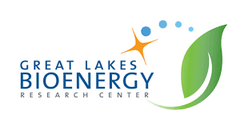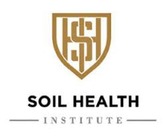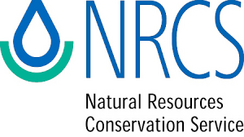Resources for TeachersNobel Conference 54
Living Soil: A Universe Underfoot
Living Soil: A Universe Underfoot
Here is a collection of resources for classroom use to prepare students for the 2018 Nobel Conference. The resources include soil related activities, laboratories, readings, and videos for high school science courses. The list is intended as a guide and jumping off point for teachers to begin a conversation in the classroom on soil topics relevant to the 2018 Nobel Conference: “Living Soil: A Universe Underfoot.” The activities can be modified for middle school students as needed.
Robert Shoemaker
High School Resources Coordinator
Gustavus Adolphus College
General Conference Information
Curriculum Resources
The Science of Soil 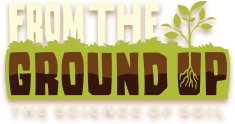
An extensive set of resources from the Nutrients for Life Foundation highlighting numerous soil related activities. The Science of Soil site includes these six lessons. Many of them are designed for the middle school classroom.
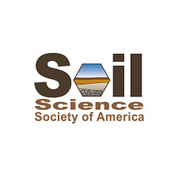
Soil Science Society of America
A K-12 teacher resource website from the Soil Science Society of America includes this matrix of lessons and activities.
Soil Subject |
Grades 5-8 |
Grades
|
|---|---|---|
|
General Soils |
||
|
Soil Biology |
||
|
Soils and Plant Growth |
||
|
Soil Chemistry |
||
|
Soil Conservation |
||
|
Soils and Land Development |
||
|
Soil Forensics |
Lab on pH and Acidity Buffering in Soils 
This is a more sophisticated lab on pH and acidity buffering in soils from the Minnesota Science Teachers Education Project. The activity is tied to the Minnesota Science Standards and can be easily used as a checkpoint if need be a curriculum.
National Agriculture in the Classroom
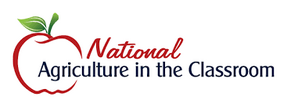 The National Agriculture in the Classroom organization has a wide-ranging group of activities and suggested companion resources listed to further your investigation and materials on soil related topics. Here are several of the lessons on the site for high school students related to soil:
The National Agriculture in the Classroom organization has a wide-ranging group of activities and suggested companion resources listed to further your investigation and materials on soil related topics. Here are several of the lessons on the site for high school students related to soil:
Fertilizers and the Environment (Grades 9-12) Students will recognize that fertile soil is a limited resource, describe the role fertilizer plays in increasing food productivity, distinguish between organic and commercial fertilizers, describe how excess nutrients are harmful to the environment, and identify different sources of nutrient pollution.
Plant Nutrient Deficiencies (Grades 9-12) Students will recognize that plants, like people, require essential nutrients to be present in the right amounts in order to be healthy, use reference materials to diagnose plant nutrient deficiencies, define fertilizer as a type of “food” for plants, and appreciate that fertilizers are used to replenish nutrients in agricultural soils.
Plant-Soil Interactions (Grades 9-12) Students will explain the roles of diffusion and active transport in moving nutrients from the soil to the plant, describe the formation of soil and soil horizons; and describe the events in the Great Dust Bowl, how they relate to soil horizons, and how those events affected agricultural practices.
Properties of Soils (Grades 9-12) Students examine different types of soil that have been mixed with water and allowed to settle. Next, they work with a soil model to investigate its components (sand, silt, and clay) and learn how the properties of these components affect the passage or retention of water through the soil and the amount of air in the soil.
In Search of Essential Nutrients (Grades 9-12) Students will learn about the essential elements found in soil, compare and contrast the essential element requirements of plants and humans, explain why plants cannot use elemental nitrogen found in the atmosphere, and identify the sources for each essential element needed by plants.
Virtual Science Learning Resource
Soil 4 Youth is a resource from the Virtual Science Learning Resource in Canada dedicated to soils and tending toward a geological/agricultural connection. All of the activities are aligned with the Canadian National Science Standards.
The Great Lakes BioEnergy Research Center
The Great Lakes BioEnergy Research Center has resources tilted more toward the energy side of agriculture as well as microbial soil organisms in a lab. Here are two examples from there large number of activities:
“The Truth About Tillage”, an example of the growing understanding among agricultural producers about soil health approaches that work. This piece comes from the Corn and Soybean Digest, an online source whose audience is “large-scale corn and soybean growers across the 12 Midwest states–the nation’s richest corn and soybean production region.”
"Healthy Food Needs Healthy Soil" by Elizabeth Dunbar from Minnesota Public Radio, dated May 2018, contains an interview with the chief sustainability officer at General Mills, Jerry Lynch. The article is centered on global climate change, soil erosion, and soil degradation.
"Can Dirt Save the Earth?" is an extensive and well researched article from the New York Times Sunday Magazine published in April, 2018 by journalist Moises Velasquez-Manoff.
Modern Ag is dedicated to information on agricultural issues including water, soil, and energy supported by the Monsanto Corporation. Each of the readings is brief and intended to be a primer within the more complex issues of agriculture.
Videos
 “The Ground Beneath Our Feet,” a 48-minute interview program from The 1A, an National Public Radio show that “explores important issues such as policy, politics, technology, and what connects us across the fissures that divide the country.” This episode features Conference 54 speakers David Montgomery (geologist) and Rattan Lal (soils scientist). It is a great introduction to both speakers and the nature of their work.
“The Ground Beneath Our Feet,” a 48-minute interview program from The 1A, an National Public Radio show that “explores important issues such as policy, politics, technology, and what connects us across the fissures that divide the country.” This episode features Conference 54 speakers David Montgomery (geologist) and Rattan Lal (soils scientist). It is a great introduction to both speakers and the nature of their work.
 “Inspiring The World About Soil and Plant Health” is a TEDxTalk by Mick Alexander. Alexander is a pasture and grazing specialist who works within the Queensland and New South Wales, Australia agriculture industry. He is passionate about grazing and farming best practices and how healthy soil relates to healthy humans, including how farmers and agriculture are solutions for the future.
“Inspiring The World About Soil and Plant Health” is a TEDxTalk by Mick Alexander. Alexander is a pasture and grazing specialist who works within the Queensland and New South Wales, Australia agriculture industry. He is passionate about grazing and farming best practices and how healthy soil relates to healthy humans, including how farmers and agriculture are solutions for the future.
“How Trees Talk to Each Other” is a TEDTalk by Nobel Conference 54 speaker and botanist Suzanne Simard.
“Intelligent Trees" ,” a 45-minute long documentary from 2016 features an interview with Simard and Peter Wollbein, the forester who wrote the popular book The Hidden Life of Trees. Available on Amazon and Vimeo.
,” a 45-minute long documentary from 2016 features an interview with Simard and Peter Wollbein, the forester who wrote the popular book The Hidden Life of Trees. Available on Amazon and Vimeo.
Organic Soil Resources
Land Stewardship Project
The Land Stewardship Project is located in Minnesota since 1982. Their focus is on sustainable agriculture with more farmers and animals on the land using resources responsibly. They have a clear focus on the fact that Minnesota sits at the headwaters of the Mississippi River and clean waters are a part of what they are striving to achieve with sustainable agriculture.
The Land Stewardship Project's Soil Builders' Network is developing a series of short videos highlighting how farmers are utilizing cover crops, rotational grazing, diverse crop rotations and no-till to build soil health in economically viable ways.
Here are two examples:
Farmers talk about how building soil health can help make their operations more resilient to climate change.
How Do We Stop Erosion?
The Land Stewardship Project has produced a series of podcasts featuring the voices of farmers, researchers and conservationists who are on the cutting edge of building healthy soil. Check out all of our Ear to the Ground podcasts.
Episode 208: Features Nobel Conference 54 speaker Ray Archuleta making a passionate pitch for treating soil like a living, breathing part of the ecosystem.
Soil Health Institute
The Soil Health Institute is a well connected organization with ties to the USDA, various soil scientists across academia, the Natural Resources Conservation Service and The Nature Conservancy. The site includes a compiled list of classroom resources.
Natural Resources Conservation Service
The Natural Resources Conservation Service has extensive information about soil including lesson plans and guides for educators.
Soil Quality Lesson Plans
Soil Quality Kit - Guides for Educators
